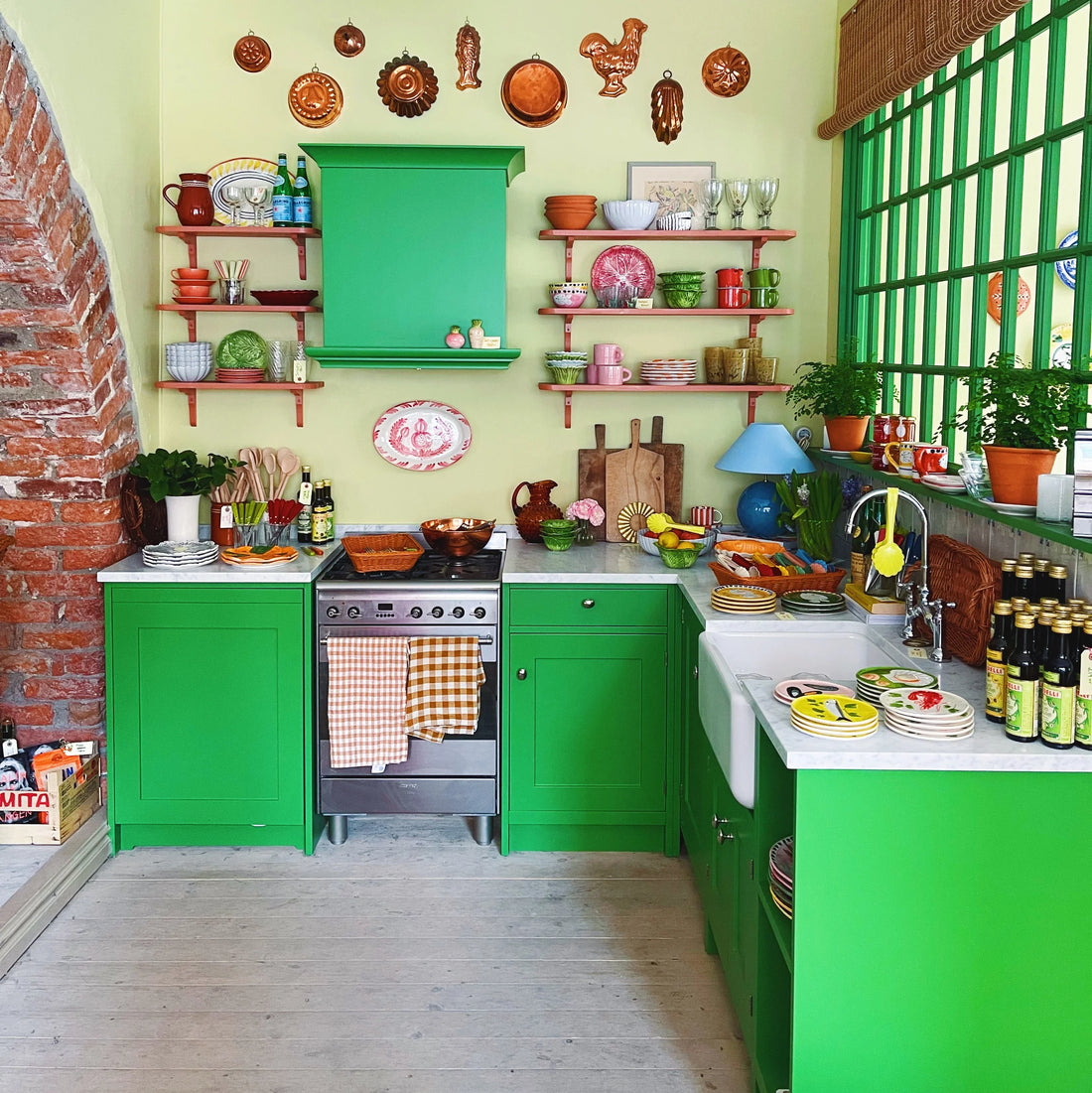
What is Dopamine Décor?
Imagine your living room on a double espresso, wearing mismatched socks in neon colors, dancing to a 2003 Britney Spears playlist. That’s dopamine décor. It’s the design trend where maximalism meets mood boosting, and the result is a space that doesn’t just look good—it feels good.
Unlike the minimalist “quiet luxury” movement (all beige everything, shhh don’t raise your voice), dopamine décor is loud. It’s personality poured into a paint can, shaken vigorously, and splashed across your home with joyful abandon.

image credit: Sebastian Bergstrom
The Science Behind the Name
Dopamine is your brain’s “feel-good” neurotransmitter—the chemical reward you get from chocolate cake, a text from your crush, or finding $20 in a jacket you haven’t worn since last winter. The idea is that by surrounding yourself with colors, textures, and objects that make you happy, you can trigger tiny dopamine hits every time you enter the room.
image credit: Sebastian Bergstrom
How Dopamine Décor Differs From Maximalism
Maximalism says, “More is more.”
Dopamine décor says, “More is more, as long as it makes me smile like an idiot.”
The difference? Intentional joy. Maximalism can veer into curated chaos—dopamine décor is chaos that’s curated by your feelings. A vintage ceramic clown lamp might be too kitsch for traditional maximalism, but in dopamine décor, it’s a mood-lifting star.
image credit: Sebastian Bergstrom
The Core Ingredients of Dopamine Décor
If you want your home to feel like a visual serotonin smoothie, here’s what you’ll need:
1. Color That’s Not Afraid of Commitment
Think hot pink accent chairs, canary yellow walls, cobalt blue kitchen cabinets.
Dopamine décor isn’t shy—it’s the friend who wears sequins to brunch.
Pro Tip: Pair unexpected color combos (lavender + tangerine, turquoise + mustard) for maximum zing.
2. Playful Patterns
Stripes, polka dots, chevrons, florals, and graphic prints—preferably all within the same line of sight.
Bonus points if they clash in a way that makes your guests grin rather than cringe.
3. Whimsy Objects
A disco ball in the bathroom.
Vintage fruit-shaped ceramics.
That giant inflatable swan you refuse to deflate after summer.
If it makes you laugh or transports you to a happy memory, it belongs.
4. Textural Overload
Velvet sofas next to shag rugs, rattan baskets under glossy lacquer tables.
If it makes you want to touch it, it’s probably right.
5. Personal Joy Triggers
Childhood memorabilia, travel finds, inside-joke art pieces.
Dopamine décor is deeply personal—it’s not about impressing anyone but yourself.
The Psychology of Living in Joy
While no one’s claiming dopamine décor will replace therapy, design has an undeniable emotional impact. Surrounding yourself with happy triggers can:
Boost creativity (chaos sparks connections in the brain)
Lower stress (comfort items act as grounding tools)
Increase a sense of identity and belonging
It’s the opposite of designing for resale value—this is designing for today’s you, not hypothetical future buyers.
How to Try Dopamine Décor Without Feeling Like You Live in a Piñata
If you’re not ready to commit to rainbow walls and an indoor swing, start small:
Swap throw pillows for bold patterns.
Layer rugs in mismatched colors.
Add a gallery wall of your weirdest, happiest art.
It’s like dipping your toe in a kiddie pool before cannonballing into the deep end.
Final Word: Permission to Play
Dopamine décor is an aesthetic middle finger to the overly curated, beige influencer homes dominating your feed. It’s a reminder that your home isn’t a showroom—it’s a living scrapbook of your joy.
And if you ever wonder, “Does this spark happiness?” and the answer is “Yes, and possibly mild confusion”—congratulations, you’ve nailed it.
- Juliette




